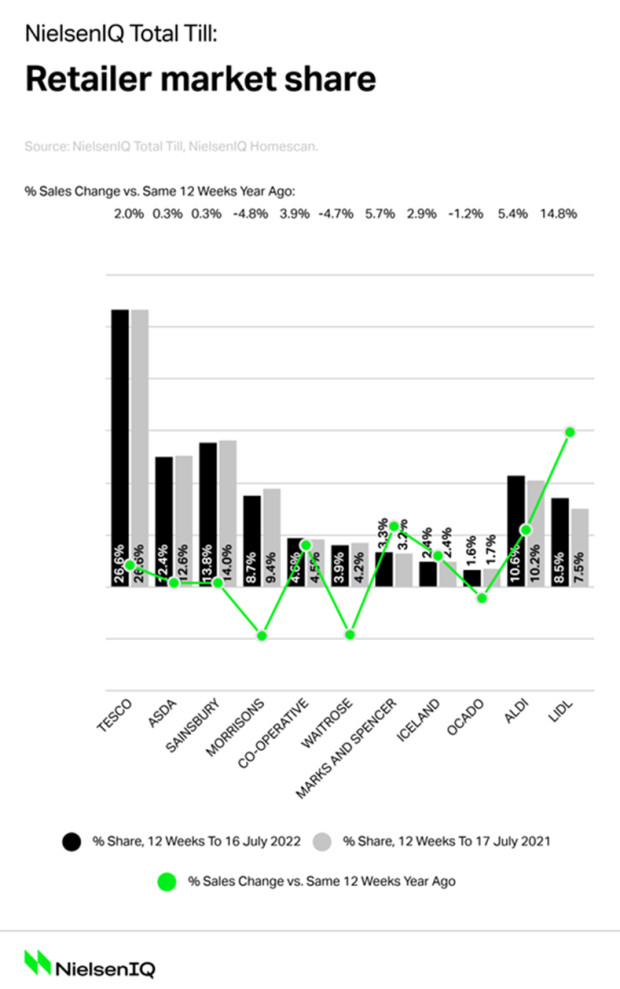Total till grocery sales at supermarkets in the UK climbed 4.4% over the four weeks ending 16 July, with a 5.6% increase during the final week as inflation, coupled with the start of the summer heatwave, saw shoppers spend more.
The data from NielsenIQ also reveals that over the four weeks, sales at the main grocery multiples increased 2.7%, which is the highest growth since April 2021 when the country exited the first Covid lockdown.
With the summer heatwave encouraging shoppers to socialise and eat picnics outdoors, sales of fresh food and beverages increased, with highlights such as sandwiches (+24%), mineral water (+28%), ice cream (+24%), and prepared salads (+18%).
In terms of non-food products, sales increased for luggage (38%) and suncare (125%), reaching £50m in the four-week period. The NielsenIQ data also shows a continued sales recovery in health & beauty products (+13%) as well as a rise in petfood and petcare products (+11.9%).
As a result of the warmer weather, visits to stores rose 10% compared with the same period last year – an uplift from the 7% increase recorded in June. In contrast, the slowdown in online sales continued, with sales falling 10.5% compared with last year. However, online’s share of sales remained broadly stable at 11.5%.
Despite the increase in till sales, the NielsenIQ data shows that volume sales fell 4.1% in the four-week period, with significant volume declines in packaged grocery (-6.4%), household items (-8.1%) and meat, fish and poultry (-9.4%) as households managed their weekly grocery shopping budget.
With high single-digit food inflation, shoppers are buying less food and drink to save money. With this in mind, spend per visit (across all channels) was down 5% as cash-strapped shoppers continued to make trade-offs when shopping, such as opting to buy smaller packs, delaying spend, or changing the products they buy.
“Shopping around is now a key coping strategy for households, who are looking to save money. However, with the start of the summer heatwave, we’ve seen UK consumers shopping more often, which has led to a stronger trading period over the last four weeks,” said Mike Watkins, NielsenIQ’s UK Head of Retailer and Business Insight.
“The improvement in top-line sales growth is a combination of increases in inflation, but also some incremental spend due to the weather. But overall, volumes at UK supermarkets are down, which is no surprise given that three quarters (75%) of households have noticed that their normal weekly grocery shop is costing more than it did six months ago, while 34% are cutting back on their grocery purchasing.”
Watkins concluded: “The worrying pressure on sales volumes is expected to continue throughout the summer period and exacerbated due to the holidays, with more Brits travelling abroad than last year. This means that the key battleground for retailers will be on who can attract the most shoppers with inspiring media campaigns to build on the ongoing shopping trend to shop little and more often. This will be important for sustaining growth when shoppers revert to their usual shopping patterns after the holidays and importantly, cope with even higher household bills.”

NAM Implications:
- Stripping out the short-term stimuli…
- …the more serious issue of inflation-impact on shopping behaviour is of increasing concern.
- Especially as we have not yet reached the full inflationary effect in the aisle.
- Add a little extra caution arising from consumer perception of inflation level…
- …that will make it a dark winter.
- That said, compare your business performance with these NielsenIQ stats…
- …to check your fair share comparison/s.




